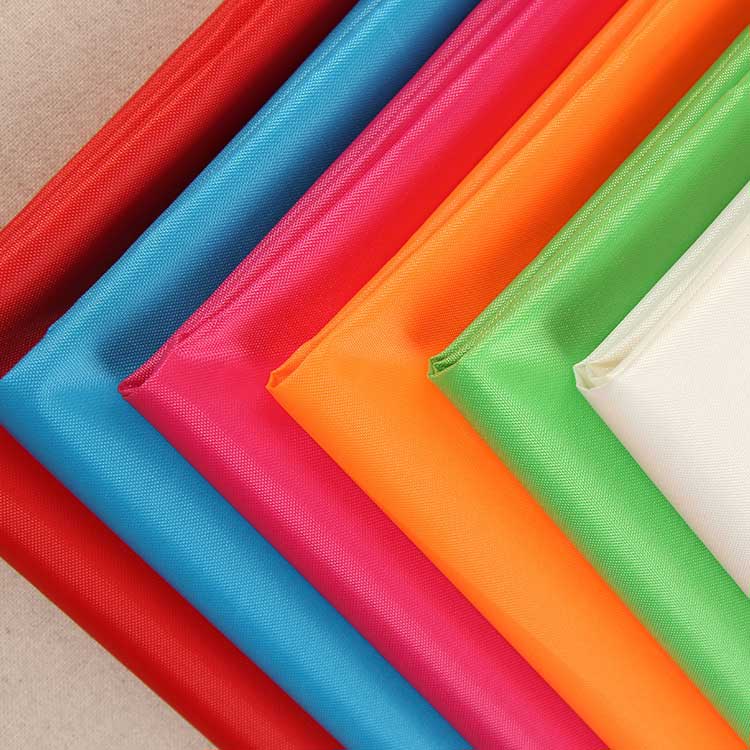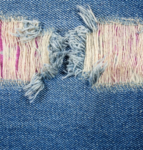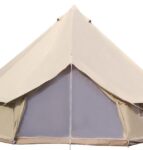Choosing the right types of materials for a project that you are working on can be a challenging experience for many people. Since there are a wide variety of materials available on the market today that you can make your selections from, it can become difficult to make the best choices without doing your homework first. Fortunately, there are sites online that are dedicated to these topics and this information can be used for a number of reasons and purposes, including helping you and others to select the best options for you and your needs. Therefore, for those of you who are interested in learning the differences between synthetic materials like nylon and polyester, here is some information that can help you in selecting the best type or types for the projects that you are working on.

1. Is Nylon the Same as Polyester?
If you are looking to use polyester or nylon materials in one of your next projects, one of the first things that you should know about is the similarities between each. This is why some people will naturally ask the question, is nylon the same as polyester? To answer this question, it is important that you know that they are both classified as synthetic fabrics. However, when it comes to the qualities of each, there are some distinct differences between each one. For instance, when you are comparing nylon to polyester, you should know that nylon is considered to be the most durable so it will last much longer in the long run. Hence, if you want to make an outfit or anything else out of nylon or polyester materials, you should consider nylon materials as the best option for standing up to time and the elements. This is not the case for those projects that require using polyester fabrics.
You should know that if you are trying to save on the cost of buying a material that is the most affordable in price, polyester materials are your best resource in this case. This is because the price of nylon materials are usually a lot more costly than their polyester counterparts. For example, if you need to buy material to make a queen or king size bedsheet, your best most affordable option is usually the polyester materials instead of the nylon materials that you can purchase in a fabric store. The only difference to this rule is that the fabric store is featuring nylon materials at a sale price that is lower than the original cost of polyester materials.
2.Should I Use Polyester or Nylon to Make Outdoor Apparel?
If you are designing outdoor apparel for your family or a friend that you want to give a gift to today, you need to know which synthetic materials like polyester or nylon make the best choice. Since the type of materials that you use can depend on what the materials are actually being used for, you need to know as much as you can today about its overall usage. For instance, if you are making an outdoor jacket and pants for your daughter, your best option for these projects is usually nylon materials instead of polyester. This is because nylon fabrics tend to be a lot more weather resistant than the polyester. Weather resistance materials like nylon can be used in any type of outdoor gear that women and men wear during their outdoor activities, and they are good to be worn when the weather becomes wet and rainy. Unfortunately, this is not really the case for polyester materials since they are often difficult to hold up for long periods of time with bad weather.
3. Which Materials Should be Selected for Its Flame Resistance Properties
When you are working on a project that requires a certain type of material to meet the specifications of a flame retardant material, you need to do your research on both nylon and polyester materials. Once you begin to look up their main safety properties, you may also find that polyester and nylon are considered to be flame resistant. These flame resistant materials can be used to make a variety of products, including bags, backpacks and other items that people carry around with them on a regular basis. Some manufacturers use both nylon and polyester in products that can be used for general purposes.
4. Which type of Material is better Nylon or Polyester
Polyester Better for Jogging Suits and Other Excercise Clothing
If you are trying to make a decision between nylon and polyester materials today, it is important that you consider several different factors. This is because the type of material that is used is dependent upon its overall usage. For instance, if you making an outfit to wear, you need to factor in the type of clothing that is best for that particular situation. In some cases, you may want to buy a jogging suit that is made of polyester since it has qualities that are ideal for these kinds of activities. Simply stated, polyester is lightweight, smooth, comfortable and it is easy to clean and dry quickly without taking a lot of time.
On the other hand, if you buy a jogging suit that is made of nylon, you may not be as comfortable. This is because nylon materials are usually warmer on the body, clinging to the body and produces more perspiration when people are exercising and performing other high impact activities. Therefore, nylon materials are rarely recommended for making a jogging suit for anyone to exercise in.
Nylon and Polyester Same Results for People with Allergies
As mentioned before, both nylon and polyester possess the same or similar properties. Therefore, if you are trying to decide which type is actually better for manufacturing products, you should know that this answer depends on what the manufacturer is trying to produce. For instance, if you are looking for which type of material to buy to prevent allergies and allergic reactions, you can choose either one of the two for your use. This is because nylon and polyester materials will naturally repel allergens so they are classed as hypo-allergenic materials. Hence, whatever choice you make between the two is not really decided solely based on its hypo-allergenic properties.
Nylon versus Polyester – Which Material is Better for Care
You should also know that both polyester and nylon materials are basically the same on the quality of the care that must be provided. Fortunately, the care that is required is virtually the same or very similar since both materials are known to be resistant to mildew stains and they are very easy to clean and care for. Therefore, if you purchase nylon or polyester clothing that’s made of these kinds of fabric, you clean them easier by placing them in the washing machine. Once these fabrics have been washed, they can also be dried in the dry by placing them on the low heat cycle setting. However, you should also know that you cannot leave the dryer running too long after they have been placed in the dryer since they can easily burn. Also, if you are going to remove any wrinkles that formed in either of these materials, you can only use a warm iron to prevent scorching and burning these materials.
If you do not want to wash these materials in your washing machine in your home, you do have other alternatives that you choose for your polyester outfits. Polyester materials may be dry cleaned instead of washed. However, this is depended on the manufacturer’s instructions. Nylon materials, on the other hand, cannot be dry cleaned by a professional in the dry cleaning business. This is because dry cleaning will simply burn nylon materials because of the solvent materials that’s contained within.
Which Material is Best for the Environment
If you and your family are concerned about the environmental impact of choosing specific types of fabrics like nylon or polyester, you need to know which one is better for the environment overall. For instance, can one or both of these fabrics be classed as having biodegradable properties. Or, can either one of these materials, nylon or polyester be a part of recycling. Thankfully, both of these fabrics have pros and cons when it comes to comparing each with a good or bad environmental impact. Hence, today when you do your homework on the environment impact on nylon and polyester, you will also find that each can be environmentally friendly based on the need. Typically, even though polyester is not known to be biodegradable, it is still a material that is considered to be recyclable. For example, if you choose to do so, you can purchase polyester materials that have been reproduced from 100% recycled polyester fabric sources.
5. Is nylon and polyester the same?
Is nylon and polyester the same? The answer to this question is no. Even though these materials are both synthetic, there are still some unique differences in both. Actually, when you are finding information about each online, you can identify specific characteristics and properties of each that makes them ideal for the things that you want and need to produce. For instance, if you look up the chemical name for nylon and polyester fabrics, you will find that the chemical names are polyamide and polyethylene Naphthalate respectively. Additionally, when you review what each of these materials is actually used for by today’s manufacturers, you will find the following:
Nylon Materials
Nylon materials are used to produce a wide range of items, including both clothing and industrial product like these listed below.
lingerie
tights
swimwear
raincoats
Drapes
Bedding
Carpets
Polyester Materials
Polyester materials are used widely used in a variety of different kinds of apparel and can be used to manufacturer
Carpets
Bedding
Drapes
6. History and Composition of Each
1930’s
When you look online for information about nylon and polyester, you may want to check out the history of both and their composition. According to sites that discuss information on both types of fabrics, both materials were discovered around the 1930’s. Researchers that were working for Dupont at that time created both from specific types of plastic compounds. One of the most notable was petroleum. So, today many manufacturers are using these synthetically made counterparts to replace fabrics in certain clothing and industrial items, particularly those that were originally made from natural materials. The reasons for both of these synthetic materials is to supply manufactures with fabrics that are not only stronger and durable, but also lightweight.
Both of these synthetic fabrics are often made through similar processing methods. For instance, these materials are formed from small parts about the size and color of one uncooked rice. To formulate long extended strands of polyester and nylon fibers, the creators of these materials connect these pellets together in order to form the threads of these materials. Once formed, they are called by the name of polymers, and the general process to manufacture nylon and polyester can also be described as slightly different.
Recent Years
In the past, you will also find that one of the primary reasons for creating nylon materials was at least 2 fold. Many companies liked nylon much better when they needed an affordable substitute for silk. This is because the feel was very similar (soft, comfortable and, lustrous feel). Additionally, when manufacturers produced polyester materials for outerwear apparel, this was also a great substitute and counterpart for those materials that were more rough and tough nature.
In recent years, researchers and scientists have been working on perfecting their craft for both nylon and polyester. So, the present distinctions between each of these 2 materials have also become less pronounced. For instance, with the newer versions of nylon and polyester materials both are very similar and have a very slight but meaningful difference between each material type. For instance, when nylon materials are used in the manufacturing of women’s stockings today, they are produced in incredibly thin forms. On the other hand, polyester has become a much better higher performance material that can easily be used in a ship’s sail. In short, the main differences between today’s versions of each are often a matter of personal preference as well as aesthetics looks and tastes.



